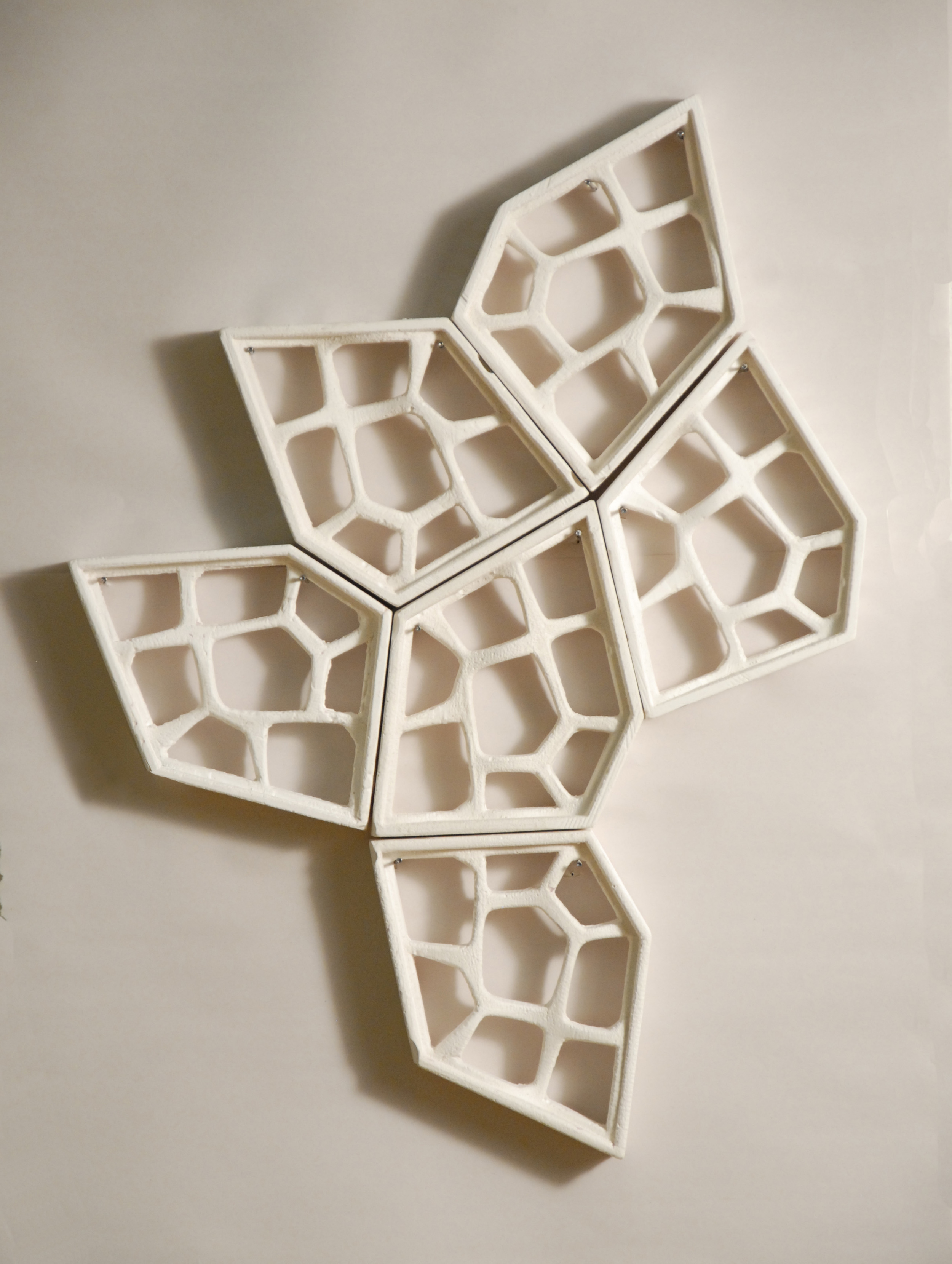
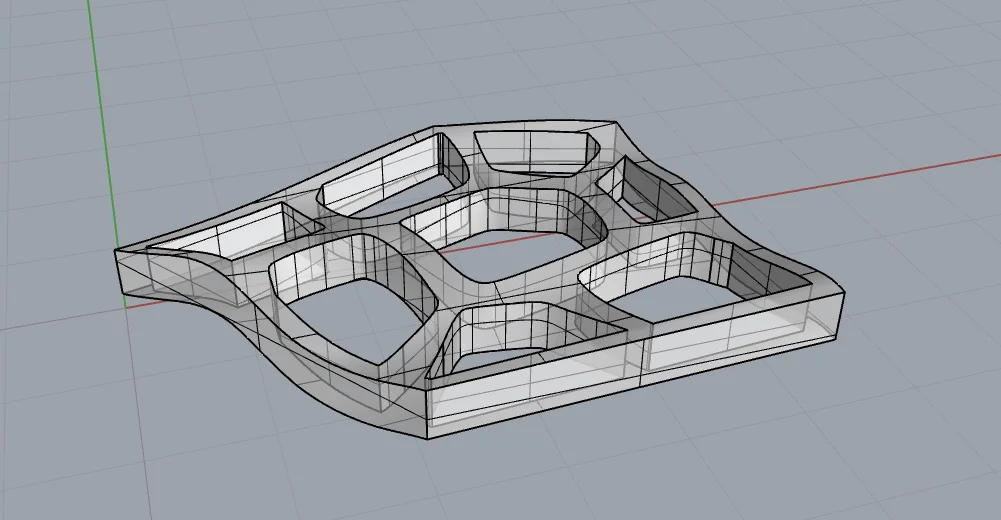
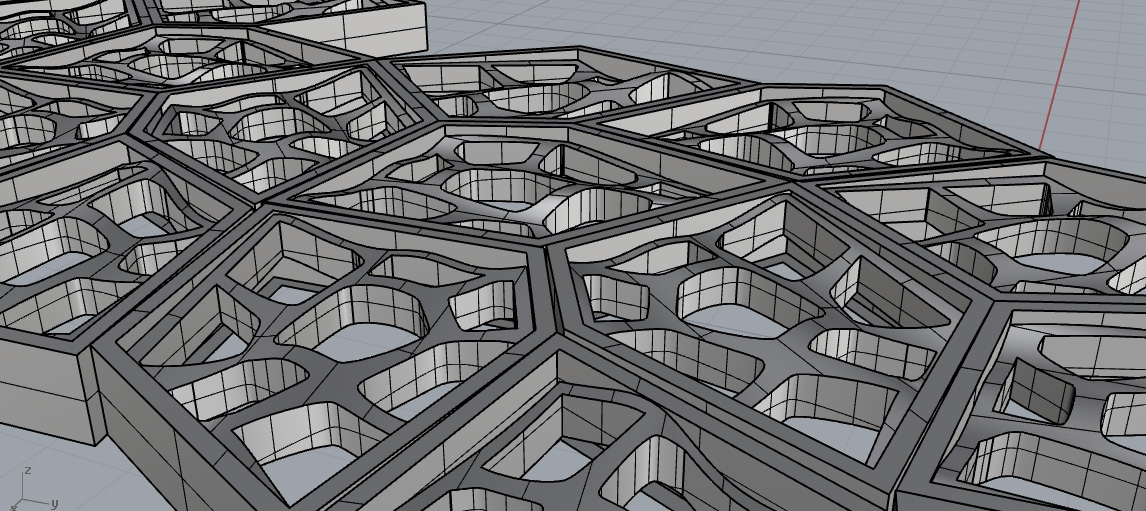
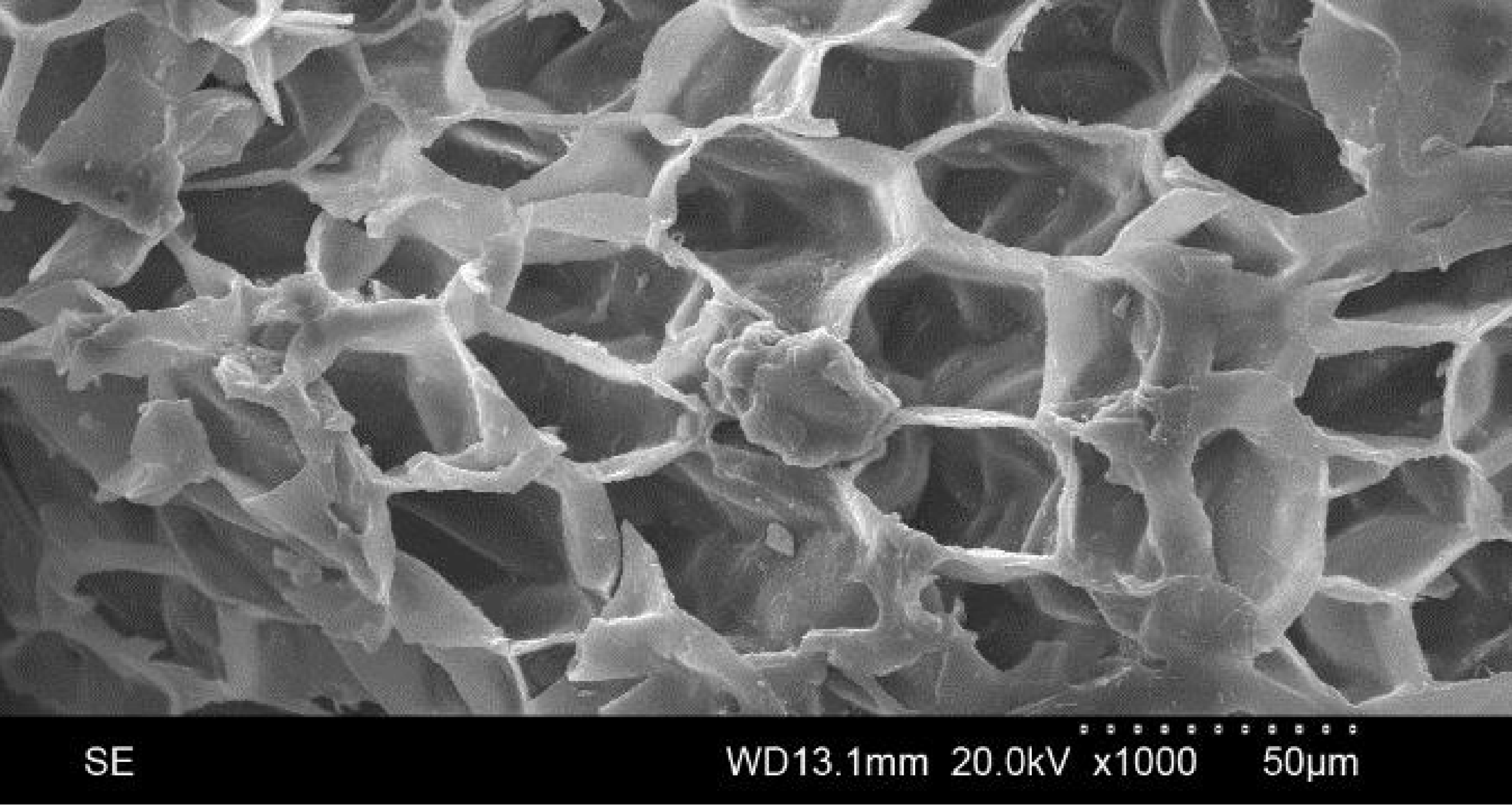
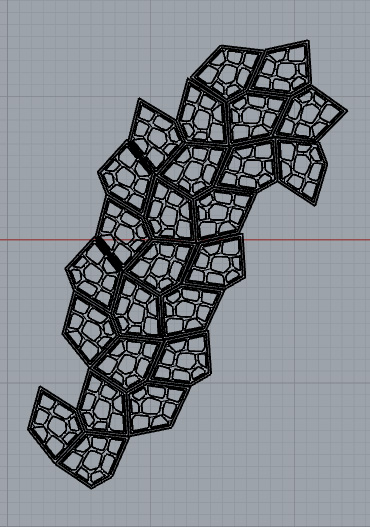
Your Custom Text Here
This tiling system was inspired by the cellular structure of cork. As certain species of cork have five sided cells, the tiling system was designed to encapsulate that organic form and is very versatile in its pentagonal nature.
I generated this design with parametric modeling in Grasshopper and Rhino; Rhino is a 3D modeling program, and Grasshopper is a node based parameters plugin. I experimented with various constraints (largely voronoi based) to generate a 3D form that felt close to the natural expression of cork. Once I found params that I was happy with, and generated the final form seen here, I also added a boundary to the edges of the “cell fabric” so that the tiling system could become more modular.
Biomimetics, as I think of it, is rooted in the belief that the natural world around us is the purest place to look for solutions to the newer human-made issues we have created. If made with the correct materials, the goal for this project would be to create a sound-reducing surface; cork has some incredible abilities to trap sound waves, believe it or not. I could see a form similar to this being produced from appropriate materials, and applied to ceilings or walls in noisy buildings, both to harness noise reduction and the beauty of science around us.
Now, if only I had the lab equipment to force cork cells to grow into this shape - that would really be something! ;)
The tiles can be arranged endlessly, to either cover a vast wall in perfect pattern or deviate from uniformity and grow into an organic form.
This tiling system was inspired by the cellular structure of cork. As certain species of cork have five sided cells, the tiling system was designed to encapsulate that organic form and is very versatile in its pentagonal nature.
I generated this design with parametric modeling in Grasshopper and Rhino; Rhino is a 3D modeling program, and Grasshopper is a node based parameters plugin. I experimented with various constraints (largely voronoi based) to generate a 3D form that felt close to the natural expression of cork. Once I found params that I was happy with, and generated the final form seen here, I also added a boundary to the edges of the “cell fabric” so that the tiling system could become more modular.
Biomimetics, as I think of it, is rooted in the belief that the natural world around us is the purest place to look for solutions to the newer human-made issues we have created. If made with the correct materials, the goal for this project would be to create a sound-reducing surface; cork has some incredible abilities to trap sound waves, believe it or not. I could see a form similar to this being produced from appropriate materials, and applied to ceilings or walls in noisy buildings, both to harness noise reduction and the beauty of science around us.
Now, if only I had the lab equipment to force cork cells to grow into this shape - that would really be something! ;)
The tiles can be arranged endlessly, to either cover a vast wall in perfect pattern or deviate from uniformity and grow into an organic form.